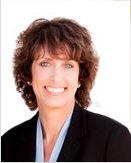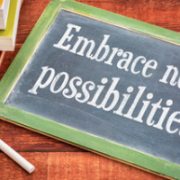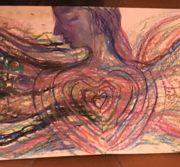There can be positive change after adversity.
By Adena Bank Lees, LCSW
For those who have experienced trauma, it is common to feel like life will never be the same again. As evidenced by a growing body of research, though, humans have the ability to not only “bounce back” from trauma, but to yield a positive life on the other side of a traumatic experience. Those who study and practice in the field of mental health refer to this as posttraumatic growth (PTG), defined as positive psychological change experienced as a result of adversity and other challenges in order to rise to a higher level of functioning.
About Posttraumatic Growth
The general concept that trauma can lead to positive change is a common theme that has appeared in religious and philosophical teachings for thousands of years, but it wasn’t until the mid-1990s that the term posttraumatic growth was coined by psychologists Richard Tedeschi and Lawrence Calhoun.
Tedeschi and Calhoun posit that PTG tends to occur in five general areas:
- Appreciation of life
- Relationship with others
- New possibilities in life
- Personal strength
- Spiritual change
These five factors make up the general themes of the Posttraumatic Growth Inventory (PTGI), a 21-item assessment tool developed by Tedeschi and Calhoun to determine an individual’s progress in reconstructing their perceptions of self, others, and the meaning of events while they are coping with the aftermath of trauma. PTG does not discount those who struggle with posttraumatic stress. It does, however, offer a new lens through which an individual can explore themselves in the shadows of trauma.
Experiential Methods Can Encourage Posttraumatic Growth
As practitioners, we must meet our clients where they are at and not minimize their suffering by jumping to practical solutions. Most often, our assistance is sought after a traumatic event has occurred, so we need to take great care in introducing PTG concepts. Therapy – especially when experiential learning methods are employed – can help people see that things like these are true for them:
- I discovered that I’m stronger than I thought I was.
- I know better that I can handle difficulties.
- I changed my priorities about what is important in life.
Experiential learning allows healing to take place in “real time” – we do not talk about something, we actually engage in it.
Take Christine (35 years old), for example, who was sexually abused from ages 8-13. Christine felt alone and did not trust others when she entered therapy. In several psychodrama group therapy sessions, Christine experienced group members’ support through their standing behind her with hands on her shoulders. She allowed hugs when crying or frightened. Group members contacted her between sessions to see how she was doing. At the close of the 12-week commitment, Christine reported, “because my group members were here for me and supported me when I was crying and in pain, I am more trusting that I can count on others in difficult times.” She continued with the group and strengthened the relationship aspect along with other aspects of PTG.
According to Dr. Kate Hudgins, co-founder of the Therapeutic Spiral Model, “Posttraumatic Stress Disorder is not a terminal illness. It can be treated with experiential methods such as those from the Therapeutic Spiral Model of psychodrama, which addresses trauma in action. As clients build up the strength to face their trauma, they realize that they can emerge victorious into PTG.”
Therapist, author, and lecturer Rokelle Lerner recommends using story writing as an experiential strategy to identify, clarify and solidify posttraumatic growth: “Every time we describe our life’s events, we are both providing and discovering underlying patterns of meaning. It is the meaning we make of our experience that shapes how we feel, think, and respond.” Lerner offers the following outline for writing one’s story:
- Once upon a time… (wounding)
- And when he/she grew up… (present)
- The story changed when… (vision)
At the very least, we can help clients understand that posttraumatic growth is a normal process that can be a possibility for them.
References
Tedeshi, R.G., & Calhoun, L.G. (2004). Posttraumatic Growth: Conceptual Foundation and Empirical Evidence. Philadelphia, PA: Lawrence Erlbaum Associates.
Tedeschi, R. G., & Calhoun, L.G. (1996). The Posttraumatic Growth Inventory: Measuring the positive legacy of trauma. Journal of Traumatic Stress, 9, 455-471.
Tedeschi, R.,et al, (2018). Post Traumatic Growth: Theory, Research and Applications. New York, NY: Routledge.
Article originally posted on Psychologytoday.com
 Adena Bank Lees, LCSW, is a counselor, speaker, author, and consultant, providing fresh perspective on traumatic stress, addiction treatment and recovery. Her specialty is childhood sexual abuse, and in particular, Covert Emotional Incest. She is a Licensed Clinical Social Worker, Licensed Independent Substance Abuse Counselor, Board Certified Expert in Traumatic Stress ®, and a Certified Practitioner of Psychodrama. She is the author of Covert Emotional Incest: The Hidden Sexual Abuse, A Story of Hope and Healing, as well as 12 Healing Steps for Adult Survivors of Childhood Sexual Abuse; A Practical Guide.
Adena Bank Lees, LCSW, is a counselor, speaker, author, and consultant, providing fresh perspective on traumatic stress, addiction treatment and recovery. Her specialty is childhood sexual abuse, and in particular, Covert Emotional Incest. She is a Licensed Clinical Social Worker, Licensed Independent Substance Abuse Counselor, Board Certified Expert in Traumatic Stress ®, and a Certified Practitioner of Psychodrama. She is the author of Covert Emotional Incest: The Hidden Sexual Abuse, A Story of Hope and Healing, as well as 12 Healing Steps for Adult Survivors of Childhood Sexual Abuse; A Practical Guide.


